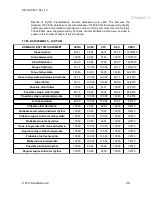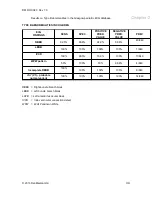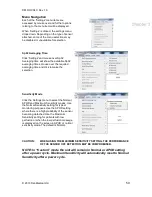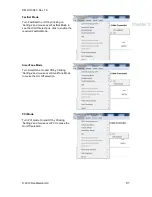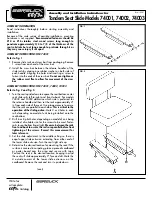
DM DOC 040 Rev 1.0
Blood Pressure general description
General description
Blood pressure (BP), sometimes referred to as arterial blood pressure, is the pressure exerted by
circulating blood upon the walls of blood vessels, and is one of the principal vital signs. When
used without further specification, "blood pressure" usually refers to the arterial pressure of the
systemic circulation and is a measure of the pressure in the brachial artery, the major artery in the
upper arm.
During each heartbeat, blood pressure varies between a maximum (systolic) and a minimum
(diastolic) pressure. The blood pressure in the circulation is principally due to the pumping action
of the heart.
Differences in mean blood pressure are responsible for blood flow from one location to another in
the circulation. The rate of mean blood flow depends on the resistance to flow presented by the
blood vessels. Mean blood pressure decreases as the circulating blood moves away from the
heart through arteries and capillaries due to viscous losses of energy. Mean blood pressure drops
over the whole circulation, although most of the fall occurs along the small arteries and arterioles.
Gravity affects blood pressure via hydrostatic forces (e.g., during standing) and valves in veins,
breathing, and pumping from contraction of skeletal muscles also influence blood pressure in
veins.
For each heartbeat, blood pressure varies between systolic and diastolic pressures. Systolic
pressure is the peak pressure in the arteries, which occurs near the end of the cardiac cycle when
the ventricles are contracting. Diastolic pressure is minimum pressure in the arteries, which
occurs near the beginning of the cardiac cycle when the ventricles are filled with blood. An
example of normal measured values for a resting, healthy adult human is 120 mmHg systolic and
80 mmHg diastolic (written as 120/80 mmHg, and spoken as "one-twenty over eighty").
Systolic and diastolic arterial blood pressures are not static but undergo natural variations from
one heartbeat to another and throughout the day (in a circadian rhythm). They also change in
response to stress, nutritional factors, drugs, disease, exercise, and momentarily from standing
up. Sometimes the variations are large. Hypertension refers to arterial pressure being abnormally
high, as opposed to hypotension, when it is abnormally low.
Principle of operation
Arterial pressure is measured by D-MAS and reported in millimetres of mercury (mmHg), although
D-MAS does not contain mercury.
D-MAS employs the noninvasive oscillometric technique and the measurement is simple and
quicker than invasive measurements, requires less expertise, has virtually no complications, is
less unpleasant and less painful for the patient. However, noninvasive methods may yield
somewhat lower accuracy and small systematic differences in numerical results. Noninvasive
measurement methods are more commonly used for routine examinations and monitoring.
The oscillometric method involves the observation of oscillations in the cuff pressure which are
caused by the oscillations of blood flow, i.e., the pulse. D-MAS uses a sphygmomanometer cuff
with an electronic pressure sensor (transducer) to observe cuff pressure oscillations, electronics
to automatically interpret them, and automatic inflation and deflation of the cuff.
The pressure sensor should be calibrated annually to maintain accuracy.
© 2013 DanMedical Ltd
36









